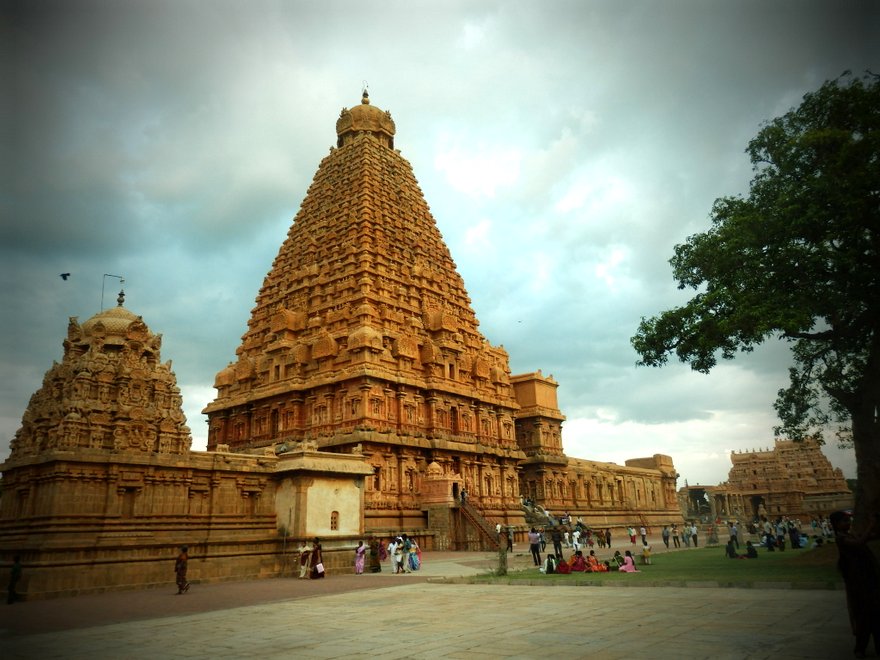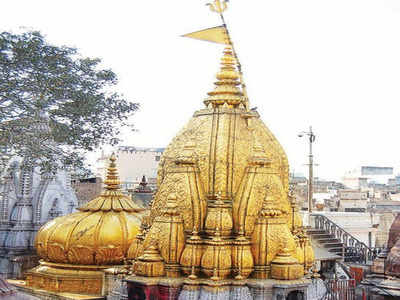This temple is situated on the western bank of holy river Ganga in Varanasi, Kashi Vishwanath Temple is one of the 12 Jyotirlingas or temples dedicated to Lord Shiva. The main deity of Kashi Vishwanath Temple is Lord Shiva, also known as Vishwanatha or Vishweshwarar meaning 'the ruler of the universe'. The city of Varanasi, the cultural capital of India, is thus known as the city of Lord Shiva. The temple has 800 kg of gold plating on its tower.

Camera, mobile phones, electronic devices are not allowed inside and must be deposited in lockers outside. Foreigners can enter from Gate number 2 where they can walk past the Indians waiting for their turn. There is also a well present within the temple complex called Jnana Vapi or wisdom well where only Hindus are allowed to enter.

In the olden times, on special festivals such as Shivaratri, the king of Kashi (Kashi Naresh) visited the temple for worship during which nobody else is allowed to enter the temple premises. Devotees were allowed after the king had concluded his prayers. The importance of the Kashi Vishwanath Temple also stems from the fact that it finds mentions in several holy scriptures of the Hindus. On the outside, the temple is adorned with intricate carvings that impart a divine quality to the facade. Other than that, the temple also houses several other small temples such as Kaalbhairav, Vishnu, Virupaksh Gauri, Vinayaka and Avimukteshwara.
The temple complex consists of a series of smaller shrines, located in a small lane called the Vishwanatha Galli, near the river. The linga of the main deity at the shrine is 60 centimetres (24 in) tall and 90 centimetres (35 in) in circumference housed in a silver altar. The main temple is quadrangle and is surrounded by shrines of other gods. There are small temples for Kaalbhairav, Dhandapani, Avimukteshwara, Vishnu, Vinayaka, Sanishwara, Virupaksha and Virupaksh Gauri in the complex. 
There is a small well in the temple called the Jnana Vapi also spelled as Gyaan vapi (the wisdom well). The Jnana Vapi well sites to the north of the main temple and during the invasion by the Mughals the Jyotirlinga was hidden in the well to protect it at the time of invasion. It is said that the main priest of the temple jumped in the well with the Shiv Ling in order to protect the Jyotirlinga from invaders.
According to the structure of the temple, there is a Sabha Griha or Congregation Hall leading to the inner Garbha Griha or Sanctum Sanctorum. The venerable Jyotirlinga is a dark brown colored stone which is enshrined in the Sanctum, placed on a silver platform. Structure of the Mandir is composed of three parts. The first compromises a spire on the Mandir of Lord Vishwanath or Mahadeva. The second is gold dome and the third is the gold spire atop Lord Vishwanath carrying a flag and a trident.

The Kashi Vishwanath temple receives around 3,000 visitors every day. On certain occasions, the numbers reach 1,000,000 and more. Noteworthy about the temple is 15.5-metre-high gold spire and gold dome. There are three domes each made up of pure gold, supplied by Maharaja Ranjit Singh in 1835.
The temple has been mentioned in the Puranas including the Kashi Khanda (section) of Skanda Purana. The original Vishwanath temple was destroyed by the army of Qutb-ud-din Aibak in 1194 CE, when he defeated the Raja of Kannauj as a commander of Mohammad Ghori. The temple was rebuilt by a Gujarati merchant during the reign of Delhi's Sultan Iltutmish (1211–1266 CE). It was demolished again during the rule of either Hussain Shah Sharqi (1447–1458) or Sikandar Lodhi (1489–1517). Raja Man Singh built the temple during Mughal emperor Akbar's rule, but some Hindus boycotted it as he had let the Mughals marry within his family. Raja Todar Mal further re-built the temple with Akbar's funding at its original site in 1585.

After a lot of rough history, the temple was managed by a hereditary group of pandas or mahants. After the death of Mahant Devi Dutt, a dispute arose among his successors. In 1900, his brother-in-law Pandit Visheshwar Dayal Tewari filed a lawsuit, which resulted in him being declared the head priest.
As per Shiva Purana, once Brahma (the Hindu God of creation) and Vishnu (the Hindu God of Harmony) had an argument in terms of supremacy of creation. To test them, Shiva pierced the three worlds as a huge endless pillar of light, the jyotirlinga. Vishnu and Brahma split their ways to downwards and upwards respectively to find the end of the light in either directions. Brahma lied that he found out the end, while Vishnu conceded his defeat. Shiva appeared as a second pillar of light and cursed Brahma that he would have no place in ceremonies while Vishnu would be worshiped till the end of eternity.

The jyotirlinga is the supreme partless reality, out of which Shiva partly appears. The jyothirlinga shrines, thus are places where Shiva appeared as a fiery column of light. There are 64 forms of Shiva, not to be confused with Jyotirlingas. Each of the twelve jyothirlinga sites take the name of the presiding deity - each considered different manifestation of Shiva. At all these sites, the primary image is lingam representing the beginningless and endless Stambha pillar, symbolizing the infinite nature of Shiva. The twelve jyothirlinga are Somnath in Gujarat, Mallikarjuna at Srisailam in Andhra Pradesh, Mahakaleswar at Ujjain in Madhya Pradesh, Omkareshwar in Madhya Pradesh, Kedarnath in Himalayas, Bhimashankar in Maharashtra, Viswanath at Varanasi in Uttar Pradesh, Triambakeshwar in Maharashtra, Vaidyanath Jyotirlinga, Deogarh in Deoghar, Jharkhand, Nageswar at Dwarka in Gujarat, Rameshwar at Rameswaram in Tamil Nadu and Grishneshwar at Aurangabad in Maharashtra.